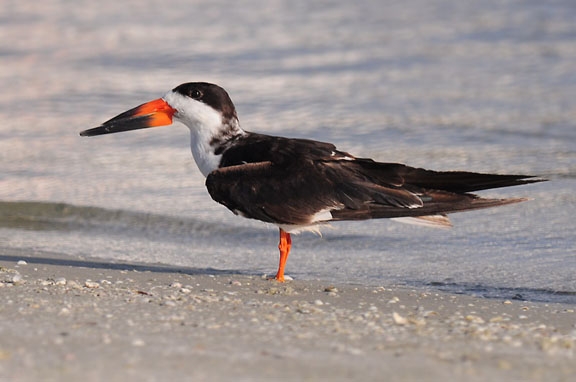
Last week I used a term I hadn’t defined yet.
Mandible means jaw and comes from the Latin mandere which means to chew. In mammals the mandible refers only to the lower jaw but in birds it’s the name for the two parts of the beak, upper and lower.
The best bird to illustrate this is the black skimmer who has very large mandibles for his size. Related to terns, this bird lives at the coast and feeds on small fish near the surface of the water.
His beak is his fishing tool. Not only is it huge and colorful but if you look closely at this picture you’ll see that his lower mandible is much longer than the upper.
To catch fish the black skimmer flies just above the water dragging his lower mandible in the sea. When a minnow is caught in his beak, he snaps his bill shut and swallows.
The technique looks like skimming, hence his name. Click here to see what he looks like when he’s fishing.
(photo by Steve Gosser)
I remember seeing many of these at Cape May, NJ in September.
Note, when you look at them straight on you will notice the mandible is very narrow so when it cuts through the water it cuts it like a knife. How accurate they must be to catch fish this way! Imagine you or I trying to catch fish with a similar kind of tool. Now that would turn some heads.
Thanks for clear explanation and an excellent example.